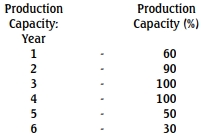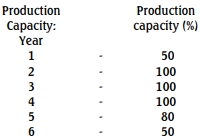- 20 Marks
PM – Nov 2024 – L2 – Q4 – Decision-Making Techniques
Determine optimal production mix for maximizing profit using marginal costing and throughput accounting principles.
Question
PK Limited manufactures two models of heavy-duty cooking racks suitable for restaurant kitchens and other commercial environments. Both models utilize the same types of raw materials and machine hours. No inventories are held. The sales budget for next year is as follows:
| Model | Sales Units | Selling Price (N) |
|---|---|---|
| A | 300,000 | 1,000 |
| B | 140,000 | 1,400 |
The following additional information is provided:
- Cost data:
| Model | Material Cost (N) | Variable Production Conversion Costs (N) |
|---|---|---|
| A | 400 | 100 |
| B | 500 | 300 |
- Fixed production overheads attributable to the manufacture of both models total N40,500,000.
- Production is completed in the machining department, where the production rate per hour is:
- Model A: 12.5 units
- Model B: 10 units
- Machine hours are limited to 30,000 hours.
Required:
a. Using marginal costing principles, calculate the optimal mix (units) of each model that will maximize net profit, and indicate the value of the net profit. (5 Marks)
b. Calculate the throughput accounting ratio for each model and briefly discuss when a product is worth producing under throughput accounting principles. Assume that the variable overhead cost, amounting to N24 million for the chosen product mix in part (a), is fixed in the short term. (7 Marks)
c. Using throughput accounting principles, advise management on the quantities of each model to produce for maximizing profit and provide a projected net profit for PK Limited next year. (5 Marks)
d. Explain two ways in which the concept of ‘contribution’ in throughput accounting differs from its use in marginal costing. (3 Marks)
Find Related Questions by Tags, levels, etc.






